Tales of the riverbank: WWF-UK, Coke and CCE in eco-partnership


WWF-UK, Coca-Coca Great Britain (CCGB) and Coca-Cola Enterprises (CCE) are partnering to help ensure a thriving future for England’s rivers. The partnership will see the three organisations significantly scale up their previous partnership to tackle the impacts of agriculture on water and promote sustainable farming to protect England’s unique chalk streams.
The new three-year partnership will support farmers in two chalk stream catchments to improve the way they manage their land and reduce the impacts of production on the freshwater environment. Improved practises will aid the resilience of agricultural supply chains, the organisations say.
Jon Woods, general manager, Coca-Cola Great Britain, commented: “Water is fundamental to our business, which is why we’re working with WWF to ensure we use it in a responsible and sustainable way. Over the last three years, we returned more than 286 million litres of water to the ecosystem exceeding our target by over 36 million litres. Together, we want to build on the success of our collaboration and show how businesses and organisations can reduce their impact on freshwater environments as well as lead the way in water efficiency.”
The new partnership follows the conclusion of a three year partnership which saw WWF-UK, CCGB and CCE working together to bring life back into two chalk stream catchments – the River Nar in Norfolk and the River Cray in South London near the Coca-Cola Enterprises’ bottling plant. The work improved over 7kms of river and replenished 286.3 million litres of water.
Leendert den Hollander, general manager, Coca-Cola Enterprises, added: “Our mission is to “inspire sustainable soft drinks choices” to our customers and consumers. Water is the main ingredient in our products and is necessary for cooling, washing and rinsing processes in our manufacturing plants. Given that 97 per cent of the drinks that Coca-Cola sells in Great Britain are made within its borders, our business is determined to use water in a responsible, sustainable way. And our work with WWF supports that mission.”
Picture credit: Charlotte Sams
Toms of Maine: Turning Hot Air into a Sustainable Resource


This article is part of a series on “The ROI of Sustainability,” written with the support of MeterHero. MeterHero helps companies and organizations offset their water and energy footprints through consumer engagement. To follow along with the rest of the series, click here.
Water reclamation is playing an increasingly important role in local and regional resource management these days. The threat of drought and dwindling fresh water supplies have forced many communities, businesses and organizations to rely on recycled water, particularly when it comes to serving non-potable needs. In many areas of the U.S. and Canada, golf courses, campgrounds and public parks now use recycled water to maintain their greens. In Southern California, some businesses run their air conditioning units on recovered water, and in Chattanooga, Tennessee, Volkswagen uses reprocessed water to stock its cooling tanks and flush its toilets. Orange County, California, has already taken the preliminary steps of transitioning to potable recycled water as a means of offsetting its three-year drought.
But as one company in Maine discovered, there are other ways that we use water commercially that drive up the ecological price of that resource – methods that aren’t as easy to address as, say, in the agricultural setting where irrigation can be more easily recycled.
“Steam is an important resource at Tom’s of Maine,” explains Susan Dewhirst, PR and goodness programs manager at Tom’s of Maine. The company, which makes natural personal care products such as toothpaste, deodorant and baby lotion, uses scalding-hot steam for everything from heating to cleaning and sanitizing its equipment. And that, just like running water, becomes a valuable, ephemeral resource when it isn’t recycled.
“The trick is to be more efficient with the water we use to limit how much we need,” Dewhirst said.
But how do you do that when you are using something like vapor?
The answer, says the company, is in the very system it uses to clean and sterilize its equipment, which is called “clean in place,” or CIP. The CIP system is designed to clean closed-loop production systems that can’t be taken apart or accessed by hand, such as a sealed piping system. The method began in the 1950s with a clunky system that involved a balance tank, a centrifuge pump and a manual hose fitting (and was still more efficient and easier than the elbow grease that was used prior to that time to clean less efficient equipment).
“We used to channel raw materials through a single pipe into mixing tanks. We had to clean the pipe every time we switched materials,” the company said.
Today, CIP is a state-of-the art digitalized system that is widely used in food and beverage industries. It has also made it possible for companies like Tom’s to ensure that the piping, hoses and other equipment that manufactures sticky substances like toothpaste and lotions are sterile at the end of the production schedule.
Best of all, the system allows the company to reduce its dependence on chemical cleaners and additives, which have the potential to pollute the environment.
Some of today’s CIP systems are built to recycle the water that is converted to steam. The process of heating the water into steam, condensing it back to water and recycling the resource will allow the company to meet its 2020 water conservation goal, which includes reducing its water footprint by almost half of what it used in 2011, Dewhirst said.
“We see the steam recycling system as a critical way to not only save dollars but minimize our overall water footprint,” said Dewhirst, who noted that the ability to recycle the steam means less impact on their energy footprint as well.
The company’s attitude toward water reflects a broader aim to work in concert with the environment, through its reduction of waste, carbon and extraneous packaging.
“Since our founding in 1970, Tom’s of Maine has had a deep respect for natural resources and reducing our footprint wherever possible, including in how we make our products,” said Dewhirst, who noted that the company also employs similar strategies when it comes to waste and fuel usage. “These are commitments we are continuously focused on and are always searching for new solutions. We saw an opportunity to be more efficient with the water we are using, and to think more broadly about recycling.”
Asked what advice she might have for other companies looking to reduce their footprint, Dewhirst said that tracking the company’s water and energy usage against long-term goals is essential.
“External energy audits are a great way to understand water usage and find ways to improve. It’s a continuous journey to find the best technology to recycle and reuse water efficiently and there always new methods to explore.”
https://www.youtube.com/watch?v=NgKilEPqyvc
Image credit: Tom's of Maine via Facebook
Make That Three Black Eyes for Natural Gas Fracking
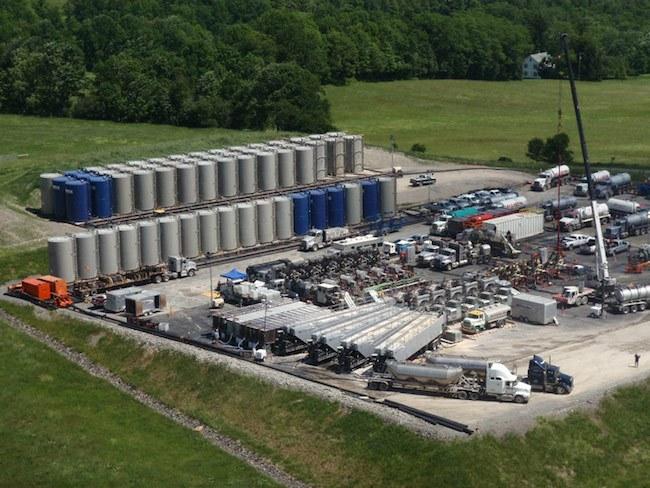

Yet another natural gas fracking study has come out, and the latest news should raise more red flags for vehicle fleet managers who are looking to replace diesel with a cleaner fuel, namely compressed natural gas or hydrogen sourced from natural gas. The latest study, from Stanford University, warns that thousands of fracked natural gas wells in the U.S. have been drilled at relatively shallow depths, potentially exposing local water resources to contamination.
Natural gas fracking, then and now
Fracking is short for hydrofracturing, the practice of extracting oil and gas from rock formations by forcing vast quantities of chemical brine deep underground.
In addition to the potential for contaminating groundwater, surface water resources are also at risk from contamination by spent fracking brine, as described by the new Stanford study:
"As part of the so-called frackwater they inject into the ground, drilling companies use proprietary blends of chemicals that can include hydrochloric acids, toluene and benzene. When the wastewater comes back up after use, it often includes those and potentially dangerous natural chemicals such as arsenic, selenium and radioactive radium drawn up from subterranean recesses."
Fracking has been used in the oil and gas industry for decades, but its impacts escaped notice for many years. Until very recently fracking occurred mainly in remote, thinly populated areas in the western U.S. That explains why the industry has been able to claim that the practice has a long track record of environmental safety -- at least, until recently.
After the Bush administration exempted fracking operations from federal environmental regulations, the practice exploded into more populated areas and farming communities, including Midwestern and Northeastern states as well as California (note, for example, the photo accompanying this article, which shows a fracking operation within an agricultural area, in sight of a nearby home).
That, in turn, has given rise to more impacts, and pushback has been growing rapidly.
A recent protest against a fracking operation in one South Los Angeles neighborhood illustrates how fracking has evolved from a relatively unknown, primarily rural operation to become an invasive force in established communities. In the case of California, the issue also has environmental justice implications, as a recent study has revealed that fracking operations are concentrated more heavily in Hispanic and non-white neighborhoods.
As the impacts of fracking have become more clear, local communities and entire states, most notably New York state, have placed moratoriums on the practice or banned it outright.
Yet another black eye for natural gas
This should be a banner year for the U.S. natural gas industry. More utilities are ditching coal and turning to natural gas for cleaner power generation, compressed natural gas is becoming popular as a low-emission alternative fuel for vehicle fleets, and hydrogen -- sourced primarily from natural gas -- is beginning to emerge as a zero-emission fuel for forklifts and other logistics vehicles, among others.
However, this has also been a banner year for studies demonstrating that cleaner emissions at the burn point need to be weighed against the natural gas fracking lifecycle.
The latest study from Stanford tears another hole in the industry's case for the safety of fracking. According to some fracking proponents, there is a very low risk of contaminating local water supplies because the wells are drilled deep underground.
However, the study found that:
"... At least 6,900 oil and gas wells in the U.S. were fracked less than a mile (5,280 feet) from the surface, and at least 2,600 wells were fracked at depths shallower than 3,000 feet, some as shallow as 100 feet. This occurs despite many reports that describe fracking as safe for drinking water only if it occurs at least thousands of feet to a mile underground ..."
In addition to recording well depths, the study also looked at water use:
Perhaps most surprisingly, the researchers discovered that at least 2,350 wells less than one mile deep had been fracked using more than 1 million gallons of water each. Shallower high-volume hydraulic fracturing poses a greater potential threat to underground water sources because there is so little separation between the chemicals pumped underground and the drinking water above them.
The findings indicate the need for improved safety standards for shallow wells, but the cat may already be out of the bag, as explained by lead researcher Rob Jackson:
"The public pays to clean up acid mine drainage today because of poor practices decades ago," Jackson said. "What are we doing today that may cause problems tomorrow?
Piling on the bad news for fracking
July really has been a bad month for fracking news. At the beginning of this month, TriplePundit noted three new developments that mess with natural gas's clean image, including "lost water" issues raised by the U.S. Geological Survey, a British government report that links fracking to destructive impacts on rural communities, and the aforementioned New York state fracking ban, based on a study that similarly connected the practice to undesirable impacts on established communities.
Last week, we also took note of a study undertaken by researchers from the University of Pennsylvania and Columbia University, which linked the density of fracked wells to a "meteoric" increase in local hospitalizations.
This all comes on top of an incendiary article in Newsweek earlier this year, followed up with more detail by Rolling Stone, that linked fracking to miscarriages and infant deaths in a region of Utah. Though anecdotal, the story is consistent with a study released by the University of Pittsburgh in June, finding increased incidence of low birth weight babies in a region of Pennsylvania.
Light at the end of the fracking tunnel
Fossil natural gas has serious lifecycle issues that fleet managers should not overlook, but more sustainable alternatives are emerging for compressed natural gas vehicles, including landfill gas and biogas.
For hydrogen fuel cell fleets, the future also looks promising. While hydrogen is sourced primarily from natural gas today, water-splitting with wind and solar energy is beginning to emerge among other more sustainable sources.
Image credit: Rob Jackson/Stanford University
Al Gore Hits Obama on Arctic Drilling Decision
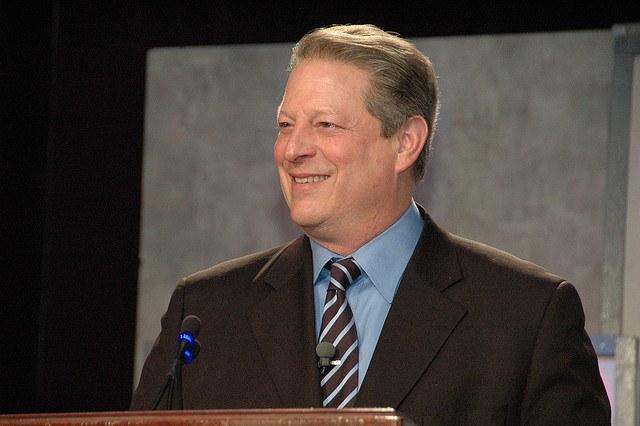

Former vice present and climate change activist Al Gore is still pointing out inconvenient truths — this time criticizing President Barack Obama’s recent controversial decision that green-lighted Royal Dutch Shell’s oil-drilling plan in the Arctic Ocean’s Chukchi Sea.
In an interview this month with U.K. newspaper the Guardian, Gore called the conditional approval of Shell’s exploratory drilling plan “insane” and also called for a ban on all oil and gas activity in the polar region.
Shell plans to begin drilling in the oil-rich Chukchi Sea very soon now that the 400-foot Polar Pioneer has reached the Arctic, after leaving its Seattle berth last month. Gore said in the interview with the Guardian that Obama was wrong to ever allow drilling in the Arctic.
It was the only major point of contention from Gore on Obama’s efforts to fight climate change, at home and through a global deal to be negotiated in Paris at the end of the year, but it's significant nonetheless.
“I think Arctic drilling is insane,” he said in Toronto, where he was passing on his techniques for talking about the climate crisis to 500 recruits from his Climate Reality Project. “I think that countries around the world would be very well advised to put restrictions on drilling for oil in the Arctic Ocean.”
As conventional oil fields decline, the Arctic is the last frontier of the oil era, containing more than 20 percent of the world’s undiscovered, recoverable oil and gas. But after the BP Deepwater Horizon oil spill five years ago, the risks of offshore oil drilling are clear: Gore said, “I think the Deepwater Horizon spill was warning enough. The conditions are so hostile for human activity [in the Arctic].”
For the most part, Gore gives Obama high marks on climate change policies, although he still says the White House has gone too far to accommodate the oil and gas industry. “I think he is doing essentially a very good job, but on the fossil fuel side I would certainly be happier if he was not allowing so much activity like the Arctic drilling permit and the large amounts of coal extracted from public lands,” Gore said.
A critical negotiating round on climate change in Paris is only five months away; but it is the president and the pope who are the most visible campaigners for climate action, not Gore.
Unlike the pope – who used an encyclical on climate change to deliver a scathing indictment of the prevailing economic order – Gore believes that “reformed capitalism” will eventually solve the climate campaign.
“I think that some form of market capitalism is at the base of every successful economy in the world today,” he said in the interview. “I think that reforms including putting a price on pollution to discourage more pollution is definitely a part of the solution.”
As the Paris summit approaches, Gore said he is the most optimistic he has ever been about finding a solution to the climate crisis. The time is ripe, he continued. Like same-sex marriage, like civil rights, he believes public opinion is about to make a massive shift in favor of action.
“Climate is now on that matrix,” Gore said. “The change is inevitable because [when] any great cause that becomes resolved into a binary choice between what’s right’s what and what’s wrong, the outcome becomes inevitable.”
He is confident there will be some sort of agreement coming out of Paris. “Even if it falls a little bit short of the 2-degree threshold, it will definitely lend a tremendous amount of momentum to an historic transition that is now well underway, away from carbon-based energy and towards renewables efficiency, battery storage and sustainable agriculture and forestry.
“My optimism is focused on primarily on the larger goal of making this transition and finding a solution for the climate crisis.”
Optimism from the man-who-should-have-been-president 15 years ago is refreshing given where we are with climate change today and the uncertainties surrounding where we are going with it.
Image: Al Gore at Web 2.0 Summit by Dan Farber via Flickr CC
Starbucks Pairs With Lyft for Shared Rides and Values
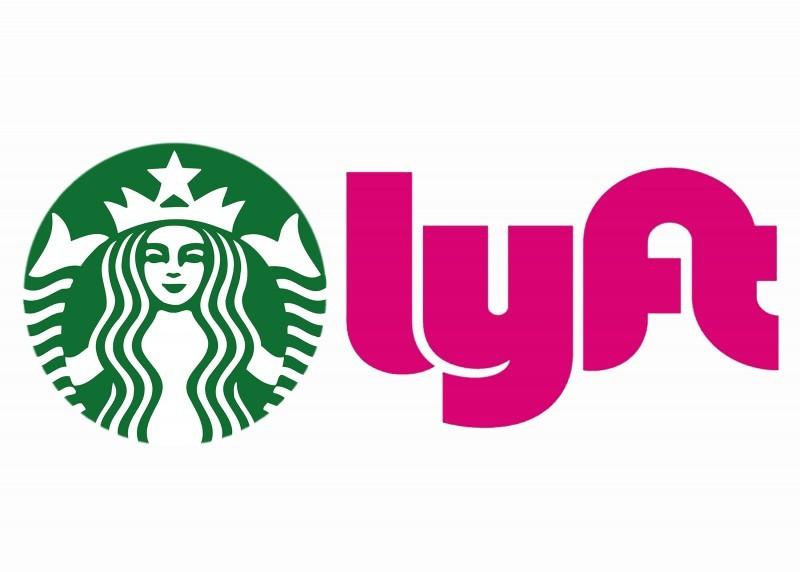

Once seen as a sustainable way to balance economic opportunities with the sharing of resources, the sharing economy in recent years has morphed in an ugly way into what is often called the “gig economy.” Even presidential candidates have weighed in on the concerns of workers struggling to find decent paying jobs — and renting their rooms on Airbnb or shuffling people around town in their car to make up for that gap. In fact, Silicon Valley gadflies excited over a new sharing economy concept are quick to label a new idea “the Uber of" (insert service here: check out what happens on a search engine, e.g. private jets, shipping, food, weed ... ).
Speaking of Uber, this darling of Wall Street, and target for what many see as what can go wrong in our economy, has fomented an ongoing discussion across many news sites, including here at TriplePundit. The car-sharing site has been pilloried relentlessly for how its workers have been treated, and has been banned from some municipalities in the U.S. Uber has also found itself tied up in litigation abroad, due to questions over liability and the legality of its services. Over the past several months, the company has tried to soften its hard-nosed image, but most of those efforts have fallen flat as the company is still often viewed as the sharing economy wolf of Wall Street.
Now a company that often finds itself in its own fair share of controversy, Starbucks, is partnering with Lyft, Uber’s largest competitor.
Is this a victory for values-driven business like Lyft?
Last week Starbucks announced an agreement with Lyft that could prove beneficial for Lyft drivers, Lyft riders and even for some Starbucks employees.
All Lyft drivers can jump to Gold Level status in the Starbucks program (which means (hooray!) a free goodie every 12 purchases and refills), and both drivers and riders can earn Starbucks loyalty points during their drive. As the partnership develops Starbucks hopes to extend discounted Lyft rides to employees to make their commutes easier. Which should be well-appreciated.
Anyone who has to be at a Starbucks at 4:30 a.m. for that dreaded morning shift can tell you most cities have meager public transportation options at that hour. This additional transport option should make Starbucks employees' commutes just a bit easier.
This partnership could also boost what advocates of the sharing economy saw as a benefit when these services first emerged several years ago: a new way to build relationships. That's sorely needed in an age when most of us have our necks bent downwards and noses stuck in our smartphone screens.
For Starbucks, this move is a way to extend the brand with minimal investment—and in what some see as the creepy side of Starbucks’ agenda, the deal with Lyft extends Starbucks’ reach as the company wants its stores, and now its service, as that “third place” between home and the office.
While coffee snobs may roll their eyes at the latest Frappuccino, Starbucks provides decent wages — and tips — for countless students, those between jobs and single parents. The company has long spent more on health insurance than coffee. And while the program is relatively small, students do have the opportunity to earn a college degree on the company dime. Starbucks also doesn’t shy away from social issues, even if it makes its own baristas uncomfortable.
One could argue, therefore, that this joining of forces with Lyft over Uber sends a signal to the sharing economy marketplace. After all, Lyft has often been the foil of Uber’ shenanigans, and both companies have been spurred into action to clean up their acts and make their drivers happier. But with Uber’s reputation largely in tatters, and the enthusiasm over the sharing economy dissipating as yet another profit scheme for the big guys, Lyft has scored a huge win with its alliance with Starbucks.
Image credit: Starbucks
Why There Should Be One Name For One Fish


A fish by any name is still a fish. But sometimes names do matter, as a recent report by the ocean advocacy group Oceana reveals. The use of one name for one fish can help protect our oceans and the fish that swim in them.
The U.S. Food and Drug Administration (FDA) requires that only the “acceptable market name” be used on labels, menus and packaging. That is a good thing. However, the FDA often allows many different species of fish to be sold under the same market name, and that is not good. For example, 56 species are permitted to be called “snapper,” and 64 species are called “grouper.”
Confused? Join the club. The biggest problem with allowing so many different types of fish and seafood species to use the same market name is that it makes it harder to stop seafood fraud and illegal fishing. Oceana believes that using one name for one fish will help the seafood industry which is plagued with illegal and mislabeled products. One name for one fish will also benefit consumers, and protect endangered and vulnerable species.
Consider that seafood is the most traded and most valuable food commodity on the planet. Billions of people rely on the oceans for employment, recreation and food. The trouble is that, without the proper care of our oceans, we could lose an important part of the world’s economy.
Illegal, unreported and unregulated (IUU) fishing is any fishing that operates outside of domestic and international laws and rules. The federal government is set to decide how to protect the seafood industry through the Presidential Task Force on Combating Illegal, Unregulated and Unreported Fishing and Seafood. The Oceana report recommends the federal government require the use of species-specific names, or one name for one fish, throughout the entire seafood supply chain. That would include everything from the fishing boat that catches the fish to the store that sells it.
The report suggests that since Latin scientific names are universally recognized, they could be used to identify species. That way language would not be a barrier since the Latin scientific names are recognized regardless of language. They are already used on many regulatory documents across the globe. The European Union already requires that all unprocessed fish products sold both in stores and online be labeled with the scientific name. If the U.S. did the same, it would “likely become a global movement, since together they make up 50 percent of global seafood imports by value,” the report states.
The use of one name for one fish would also mean that when we go to the store to buy fish, we would know exactly what we are getting. Gone would be the days when we buy a fish labeled “snapper” and after we cook it, realize it just doesn’t taste like snapper.
Image credit: Flickr/jh_tan84
How to Structure Your Social Enterprise for Maximum Benefit


By Darcy Hitchcock
Does the designation of for-profit or not-for-profit make any sense anymore? With the rise of social entrepreneurship, the line has been blurred between for-profit and not-for-profit. There are now for-profit businesses certified as B-Corps run by social entrepreneurs and there are not-for-profit organizations with for-profit businesses helping to fund their charitable mission.
But even social enterprises are often focused solely on their external mission, overlooking their employees’ needs for empowerment and wealth creation that worker-owned co-ops and democratically-run businesses can offer.
We need organizations designed to benefit society and employees at the same time!
As the diagram below indicates, there are a number of different points on the spectrum from traditional not-for-profits to traditional all-about-profit corporations. I’ve arrayed different organizational forms with two axes: pure nonprofits to full for-profits; and organizations that are designed primarily to benefit society versus employees. Below each type, I provide examples that can be easily investigated on the Internet.
Here are five innovative organizational forms. See how they can be mixed to provide a maximum-benefit hybrid.
Forms benefiting society
There are a number of different organizational forms focused on benefitting society (or the environment) beyond the traditional charity.
1. NGOs funded by their own businesses: Some NGOs (nonprofits) have responded by creating for-profit businesses where the profits go toward charities. For example, the late actor, Paul Newman, created a food company, and 100 percent of the profits go to the Newman’s Own Foundation. The company started selling his salad dressings, and it has since expanded into a number of different food items including pet food. By 2012, the foundation had given grants of over $350 million to charities around the world, arguably much more than if they had stayed with a pure nonprofit model.
2. B-Corporation: A B-Corp is one that has been certified that it provides social benefit. Greyston Bakery was created to provide jobs to people who needed them. They hire whoever shows up on a first-come basis. The profits from the bakery go to their foundation which then in turn funds more social programs.
Because the for-profit operation is also providing an important social benefit, Greyston became certified as a B-Corp. A number of states have passed legislation recognizing B-Corps, and some municipalities like San Francisco give preference to B-Corps in purchasing decisions. While B-Corps started in the United States, they have now spread to 37 countries.
3. BoP: I put Base of the Pyramid organizations in the upper right hand corner of the table because many of the largest consumer companies are experimenting with repackaging their products for the poorest of the poor. This may not be a separate organizational form, but it is a strategy worth investigating. In "Capitalism at the Crossroads," author Stuart Hart indicates that this may be the only remaining large market opportunity for companies that have saturated the developed world.
While on the face of it, it may seem immoral for rich corporations to sell products to the poor, the uncomfortable truth is that many poor people have to pay more for services than you do. You can buy in bulk (say, a liter bottle of clothes detergent, for example), while they may be only able to afford a single-use packet. You purchase cheap electricity from your utility, but they may pay many times that in kerosene. You may chafe at credit card interest rates, but they’re puny compared to loan sharks charging 25 percent a month to the poor!
Forms benefiting employees
The organizational forms I’ve mentioned so far are focused on benefitting society. But what about the well-being of employees?
4. Cooperatives: While ESOPs are usually formed more as a tax avoidance strategy, the employees are truly the owners in worker-owned cooperatives where they not only own stock but also make major decisions. The classic example is Mondragon in Spain, which has grown into huge economic engine with a wide range of businesses. In 2010 it generated just under 14 billion Euros in sales and employed about 100,000 people.
The company is committed to maintaining employment rather than profit margins, so if one business is struggling, employees get retrained and loaned to others. This meant that in 2008 while many in the United States and much of the world were thrown out of work by the Great Recession, Mondragon employees who were laid off were quickly transferred to other companies within Mondragon. According to a United Nations paper, Harnessing the Cooperative Advantage to Build a Better World, by 2010 most were back at their regular jobs again.
Worker owned co-ops are not just popular in the Basque region of Spain. The U.S. Federation of Worker Owned Cooperatives list members in practically all industries.
5. Democratic organizations: Mondragon operates in a democratic fashion, emphasizing self-management. It invests about 10 percent of its profits in social activities, ranging from research and education to cultural activities and social support services.
To me, this seems a more fair way to allocate wealth. Rather than having the lion’s share go to the CEO or people who only bought stock with a click of a button, why not have most of it go to all the people who work hard 40 or more hours a week to make it thrive?
Psychologists have found that having control over your work is key to job satisfaction. You get to vote for the president of the United States; why not your boss? Many organizations operate democratically; Zappos and WD-40 are two recognizable names amongst many certified by WorldBlu.
Why not a bit of both?
It seems the real opportunity is to blend social enterprise with worker-owned and democratically-run cooperatives.
In a Bloomberg BusinessWeek article called How three social ventures look beyond profits, John Tozzi talks about Cooperative Home Care Associates in New York. This co-op has 2,300 worker-owners, mostly poor, minority women who had been unemployed. They provide home care for elderly or disabled Medicaid patients. In addition to being owners in the business, they get time-and-a-half for overtime, extremely rare in the industry. The company has been in business since 1985 and are certified as a B-Corp. It’s as if they took my diagram and stirred.
Now we need to rinse and repeat!
Image credits: 1) Flickr/Kris Krug 2) Darcy Hitchcock
Darcy Hitchcock is the author of a number of award-winning business books including The Business Guide to Sustainability (now in its third edition). In her latest book, GREAT WORK: 12 Principles for your Work Life and Life’s Work, Darcy shares what she has learned about finding a calling, making a difference and leading organizations. It’s available in print and also three e-books: "Finding Your GREAT WORK," "Designing Organizations for GREAT WORK", and "Leading Others to GREAT WORK."
UK leads way in tidal energy technology


Despite the British government slashing support for renewable energy in the last few weeks, a new report from Frost & Sullivan finds that the UK is the market leader in the development of tidal energy solutions.
The UK is the frontrunner ‘buoyed by an ideal tidal pattern and a supportive regulatory scenario’, the analysis says. Canada, China and South Korea are also showing steady progress. The United States is one of the top innovators.
"The success of smaller demonstration plants will propel the immediate adoption of tidal stream and tidal barrage technologies," says Technical Insights Research Analyst Lekshmy Ravi. "The deployment of hybrid energy systems consisting of a combination of tidal and offshore wind energy seems probable in the long term."
The news contrasts with recent government action that has seen it abandon its two main policies to tackle carbon emissions, the Green Deal and the Zero Carbon homes plan as well as cutting subsidies on wind farm projects from next year.
In her first major speech last week on climate change, Energy and Climate Change Secretary Amber Rudd set out the Conservative commitment to tackling climate change whilst keeping bills down in order to deliver lasting economic security for hardworking families and businesses.
Speaking to business leaders in London, she said that the global climate change agreement to be finalised in Paris in December must work for business so that the private sector can play its full part in shaping the solutions to climate change through innovation, technology, enterprise and competition.
4 Ways to Make Your Sustainability Programs Downsize-Proof
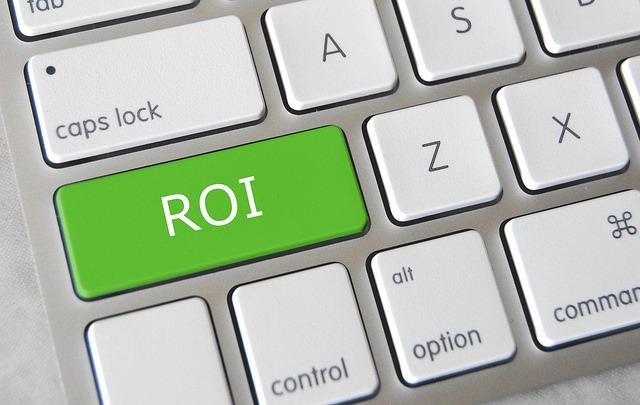

This article is part of a series on “The ROI of Sustainability,” written with the support of MeterHero. MeterHero helps companies and organizations offset their water and energy footprints through consumer engagement. To follow along with the rest of the series, click here.
By McGee Young
These are good times for sustainability initiatives. Cost-saving returns on investment grab the attention of budget hawks. Marketing teams love to tell sustainability stories. CEOs can now hold their heads a bit higher at Davos, COP and Aspen when asked how they are addressing climate change.
But will this boom turn to bust? If so, should you worry about how to defend your sustainability programs the next time costs have to be cut. When the ROI is harder to calculate, when consumers have less discretionary income, when the CEO retires, how do you make the case to continue your good work?
Taking a page from Silicon Valley, sustainability professionals should focus on creating increasing returns with their programs. That is, for each additional unit of input there is a correspondingly larger increase in output or value.
For example, think about social networks. Each additional person who joins the network makes the experience better for everyone else (except maybe your distant relatives who comment on your Facebook posts). In a previous generation, the spread of telephones had a similar effect. Each person who gained access to a telephone made the technology more valuable for existing users.
By focusing on programs that generate increasing returns for your organization, you can buffer sustainability against the inevitable questioning and second-guessing of its ROI.
Here are four tips that can help you sustain your sustainability programs even in the face of downsizing, reorganization and cost-cutting crusades.
1. Integration
Sustainability programs are more durable the more integrated they are into the fundamental production of value in your organization. There is often an inverse relationship between the startup costs of a sustainability initiative and its stickiness. A more fully integrated sustainability program is more difficult to get started, but high up-front costs work to its advantage in the long run. A program that takes years to set up, integrates with software and other systems, and requires more resources to establish is more difficult to cut.
2. Network effects
Most companies design products that work well for a specific customer. But when a company can create an ecosystem, where each additional customer brings value to existing customers, magical growth happens. Remember when Instagram launched? If you were one of the few customers using the early version of Instagram, you would have found it useful – for your own purposes. Once it became a photo-sharing app, each additional user made the experience better for existing users. It’s great to look at your own pictures through sepia tones, but it’s even more fun to look at your friends’ pictures.
Sustainability programs that create network effects survive because the value of the program far exceeds the cost of setting it up. Employee engagement initiatives are the best example of network effects improving sustainability ROI. For example, MeterHero’s water and energy conservation employee engagement programs allow employees to compete against each other to save water and energy at home and earn cash for their savings. The more employees that participate, the more value is created for participants and the more value returned to the company.
3. Learning effects
Look down at your keyboard. Do you know why the keys are arranged the way they are? Because your great-great-aunt learned how to type on this keyboard layout. Once a critical mass of typists learned how to type on the QWERTY keyboard, no further changes were possible. Have you ever tried to type on a European keyboard? It’s impossible not to hunt and peck!
If your sustainability programs create valuable skills by virtue of participation, others will want to participate in your programs to acquire these skills. If these skills are in turn valuable for your company, your program is unlikely to be cut. Does your sustainability program teach water and energy literacy? Can your employees tell you the difference between a CCF and an acre-foot of water? If you can show a difference in the innovation and productivity of sustainability program participants versus others in the company, your program will thrive.
4. Inevitability
Psychology plays an important role in the sustainability of sustainability. People conform their behavior to match the expectations of their environment. If you can build your company identity around sustainability, you’ll have more ammunition to fight against retrenchment. If you are really effective, you’ll help carve a niche for your company as the brand leader for sustainability in its sector.
Today’s consumers are increasingly fickle in their sustainability expectations. While they are passionate about ecological issues, they often make choices based on low-information impressions of corporate behavior rather than measured assessment of sustainability programs. For this reason, the story that you tell is as important as the actions you take. Your customers must be able to take for granted that you are the sustainability leader in your sector. Once you achieve that position, your programs will be more resilient because your customers will demand nothing less.
With climate change appearing to become more dire by the day, and water scarcity a fact of life for most of the world now, sustainability programs should see their status elevated in most companies. But shareholder expectations and pressures to increase profits often pit sustainability against the bottom line. By focusing on programs that provide increasing returns to the company, sustainability professionals can help achieve triple-bottom-line results – profits, planet, and people.
Image credit: Flickr/GotCredit
McGee Young is founder and CEO of MeterHero, a water and energy conservation platform. MeterHero allows companies to fund conservation rebates that consumers earn as they reduce their water and energy consumption. McGee was a winner of the Midwest Social Innovation Prize, a finalist in the Clean Energy Challenge, and his company was selected for the charter class of startups in the Global Freshwater Seed Accelerator. Prior to MeterHero, McGee founded H2Oscore, while also serving as an Associate Professor of Political Science at Marquette University. He is the author of “Developing Interests: Organizational Change and the Politics of Advocacy.”
UAE to Scrap Automobile Fuel Subsidies
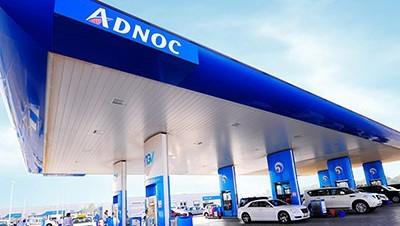

For years the United Arab Emirates had the lowest automobile fuel prices in the world. Thanks to the government’s long-standing policy of subsidizing gasoline (petrol) and diesel, current average gasoline prices are less than 1.7 dirhams (50 cents) a liter. Considering the average price worldwide is about $1.21 a liter ($4.60 per gallon), driving the 87 miles (140 km) between the city centers of Abu Dhabi and Dubai is a bargain at the pump.
But the bargain for the UAE’s citizens and expats comes with a huge price. The International Monetary Fund (IMF) estimates that petroleum subsidies cost the UAE’s government about $7 billion a year, with all energy subsidies totalling $29 billion annually — almost 7 percent of the country’s GDP. Intergovernmental organizations including the IMF and World Bank have long called on countries in the Middle East to end subsidies for fuel and food, largely because of economic (and recently, environmental) arguments. Some of the reasons behind subsidies are cultural, as countries’ rulers within the region view subsidies as a way to share their wealth and to protect the poor.
But as of August 1, automobile fuel prices will no longer be subsidized, and the Ministry of Energy each month will set the cost of gasoline and diesel largely based on the prices reflected in global markets.
The result could be a society that rethinks its relationship with the car. Currently the UAE is a society heavily reliant on the automobile for transportation. Dubai has an impressive metro system, but large swaths of the nation’s largest city have little access to public transportation. Getting around Abu Dhabi is almost impossible without a set of wheels. And those wheels are big — the largest SUV each automaker sells on the market are the dominant cars one sees on the roads. Meanwhile, except for the country’s beaches and sidewalks along city waterfronts, most of the UAE is largely unfriendly to pedestrians and bicyclists.
So, for a country that covets a leadership role in the global debate over climate change, this announcement signals the UAE is taking sustainable development more seriously. Abu Dhabi hosted a United Nations meeting last year in the run-up to COP20, and will host the biennial Ecocity World Summit this fall. The legacy of the founder of the UAE in part lies on his focus on environmental stewardship, and is largely behind increased efforts to conserve the country’s mangroves and endangered species. Abu Dhabi has also launched Masdar City, which the emirate promotes as a clean technology cluster that increasingly attracts more multinational companies and startups.
But ending fuel subsidies is a substantive policy that could change consumer behavior and nudge citizens to think more responsibly and sustainably. Most residents of the country drive down the street for a quick errand or leave their car’s engine on while running the air conditioning -- not because of the harsh summer weather, but because they can. To that end, many residents have expressed dismay over the announcement, fearing prices in the country for more goods and services will surge.
Nevertheless, with the price of oil cratering, such price increases will not create nearly as much shock as they would if oil was over $100 a barrel. And in the long run, more consumers will consider smaller cars (such as my Kia, the smallest car I could find) or even hybrids instead of the typical four-wheel drives. If the government next tackles fuel used for homes and businesses, nascent industries such as solar and smart home systems could find a potentially lucrative market here.
Of course, the decision to scrap subsidies was more economic than environmental. Without the subsidies, the UAE’s break-even petroleum price falls to $65 from $80, and the government’s budget deficit would also fall by 80 percent. But UAE residents will soon drive less, demand more public transportation and, in the future, builders will create developments far friendlier to those who eschew driving for walking. And for a country grappling with balancing sustainable development with economic growth, this week’s announcement is one that will pay many dividends in the long run.
Image credit: ADNOC